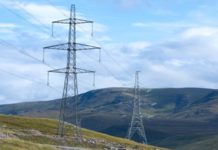
Eon has urged National Grid not to offer long-term contracts for balancing services. The energy firm believes anything more than three-year terms risks locking in higher than necessary costs for consumers.
Speaking at National Grid’s Power Responsive conference, Sara Vaughan, strategy & corporate affairs director at Eon, said the supplier currently has around 160MW of flexibility under contract from around 20 industrial and commercial businesses. “That is something we want to increase,” she said, with customers set to benefit as “the value of flexibility increases.”
Vaughan noted progress made in creating new demand-side markets, such as bridging contracts in Firm Frequency Response, STOR runway and enhanced frequency response (EFR), “which has really led to batteries beginning to take off”.
However, she said the pace of change within the energy system had also led to “sticking plaster solutions” that risk delivering sub-optimal outcomes.
Eon backed National Grid’s proposed reforms and simplification of balancing services, said Vaughan, with the firm optimistic that simplification and standardisation would lead to secondary trading.
“[We want to see] no more sticking plasters but rather a long term fix,” said Vaughan. “We see [Grid’s consultation] as a move in the right direction. We want fewer products that are standardised … which will lead to secondary trading in the market, and effective penalty regimes. If we increase those penalties, that will create more secondary trading as people try trade their way out of difficulty.”
While some aggregators have called for longer-term contracts to give customers confidence to enter the balancing services market, Vaughan said Eon “was not in favour” of long contracts for fear of locking in high costs. These should be no longer than three years, she said.
Vaughan also called for better incentives for distribution network operators (DNOs) to use flexibility to optimise networks – and reform of the settlement regime to bring small businesses and domestic consumers into system balancing.
Related stories:
National Grid adds 500MW of flexibility in 2016, more to come
20 firms outline what it stopping them providing DSR
Demand response and battery storage: Give us your views
Free DSR and battery storage conference
Battery storage: Finance a challenge but businesses predict 3-7 year paybacks
National Grid plots major overhaul of balancing services market
As solar generation makes history, National Grid starts to feel the burn
Can National Grid hit its 2020 DSR target?
Free report: DSR and battery storage
Follow us at @EnergystMedia. For regular bulletins, sign up for the free newsletter.



